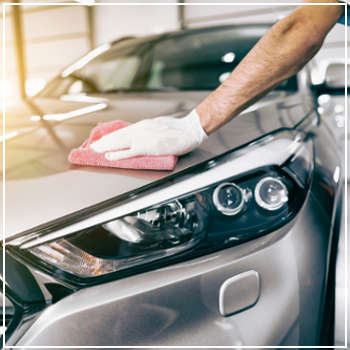 You’ve had a car on lease for about three to four years now. A few months before you reach the deadline, the leasing company contacts you to get the process started. Part of that entails having your car inspected.
You’ve had a car on lease for about three to four years now. A few months before you reach the deadline, the leasing company contacts you to get the process started. Part of that entails having your car inspected.
At this point, you may start to wonder if you’ll have to pay extra. Typically, the leasing company charges you for anything beyond normal wear and tear. Aside from the obvious dent or scratch, what falls into this category?
What’s Considered Average?
Because the leasing company plans to sell or lease out the vehicle to someone else upon your return, they want to do as few repairs as possible to get the greatest value for the car. As a result, if the repairs look like they’ll exceed the average amount needed to refurbish the car, you’ll be expected to pay.
Generally, you can be charged for the following conditions:
- Any dents, dings, scratches or scrapes on the exterior, bumper and wheels.
- “Curbed” wheels.
- Cracks, pitting and stars on the windshield and the car’s other windows.
- Greater-than-average or abnormal tire wear.
- Upholstery stains that can’t just be cleaned out.
- Upholstery tears requiring more than standard refurbishing.
So you’re not faced with a high repair bill when returning your car, it’s a good idea to clean off the vehicle in advance and have basic repairs done.
How the Process Works
When the deadline approaches, the leasing company may contact you 90 days before to discuss a few options:
- Return the car
- Buy the car
- Lease another vehicle
- Extend the existing car’s lease on a month-by-month basis
At the time, you’ll be presented with a buyout price and the contact information for the independent inspection service. From there, you’ll be expected to reach out to this third-party company to schedule your appointment. Then, the inspector comes to your home or workplace to survey your car for approximately 45 minutes.
During the review, the inspector measures the size and depth of all dents, scratches and other visible issues. This information is entered into a computerized program, which estimates the cost for that particular repair. Later, the inspector sends you a condition report listing every issue beyond normal wear and tear, and what it costs to fix the problem.
What You Can Do
In any case, it’s a good idea to be ahead of the game. Before the leasing company contacts you:
- Understand what’s evaluated. The manufacturer’s website may have a list of what the inspector looks for, and what counts as standard wear and tear. Generally, this includes any dents or scratches larger than a credit card. Meanwhile, the inspector will assess your car for exterior, interior, mechanical, window, light and tire issues.
- Check the mileage. Is your car approaching the 36,000-mile mark? At this point, not only could your car experience more wear, but the leasing company will start to charge you a per-mile fee beyond this milestone.
- Have autobody work done. At the very least, get your car washed to loosen up and wash away the dirt. Don’t forget to remove your personal items! To increase your car’s appeal, make an appointment for detailing and touchups beforehand, including paintless dent repair.
- Replace your tires. Well in advance of the 90-day proceedings, get the tires replaced. If you’re on a three-year lease, change them after two years. Otherwise, if you wait until the inspection, you’ll be charged for excessive wear and be expected to pay for a new set you won’t use.
- Think about a second inspection. If the first inspection doesn’t go as planned and you decide to fix up the vehicle on your own dime, be sure to schedule a second inspection to determine that all repairs were done correctly, and that nothing else is outstanding.
Are you approaching this deadline and now need end-of-lease repairs? Work with DaSilva’s Auto Body to have anything from detailing to mechanical repairs completed before the inspection. To make an appointment, contact us today.




